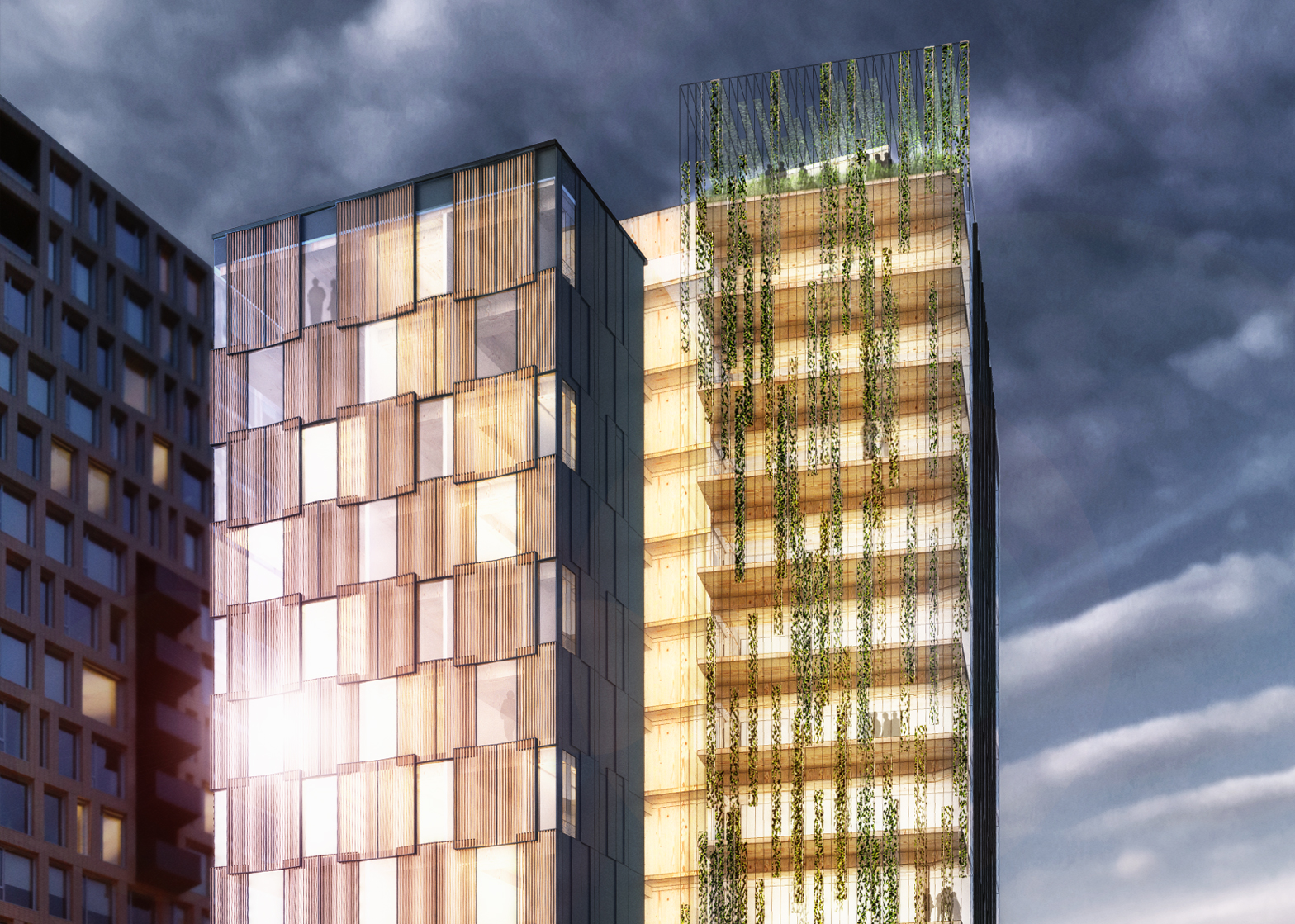Lever Architecture has designed a 12-storey tower for Portland, Oregon, that will be one of the tallest wooden buildings in the US.
Called Framework, the mixed-use building is slated to be constructed in the Pearl District, a trendy Portland neighbourhood.
If completed, the 130-foot (40-metre) tower will be one of the first tall wooden buildings in the US.
Renderings show a rectilinear building clad in glass, wood screens and hanging plants.
Cross-laminated timber will be used for floor slabs and a lateral force resisting system (LFRS), while beams and columns will be constructed of glue-laminated timber.
The superstructure will sit atop a conventional mat foundation made of reinforced concrete.
Wooden elements will be visible from both inside and outside the building.
"The design is intended to reveal the nature of the innovative tall timber structure at the scale of street and the larger city skyline," said Lever Architecture, a Portland firm established in 2009.
A similar project by Works Partnership Architecture was recently completed in Portland. The five-storey Framework building has a concrete base and engineered timber frame.
Lever Architecture's building will encompass 90,000 square feet (8,360 square metres).
Retail and community space will be located within the double-height ground level, while the upper levels will contain offices and apartments.
The building's mass will be split in half by a central vertical core, which is visible from the exterior.
"Circulation and building services will be carefully organised to promote interaction and use of resources on a constricted site," the firm said.
The development is being funded by Project^, a local real estate firm, and Home Forward, a local investor.
"The building seeks to develop a model for a sustainable urban ecology by promoting social justice, sustainable building and economic opportunity, thus yielding broad advancement of these objectives at a national scale," said the project team.
In September, Framework was named one of two winners of America's first Tall Wood Building Prize, given by the US Department of Agriculture in partnership with the Softwood Lumber Board and the Binational Softwood Lumber Council.
The other recipient is 475 West 18th Street, a 10-storey Manhattan building by SHoP that is slated to be the city's tallest timber-framed structure.
Firms applying for the award were required to submit designs for a building that rises at least 80 feet (24 metres) and incorporates mass timber or composite wood technologies.
Each winner received $1.5 million (£1 million), which is intended to fund research into the use of engineered wood or manmade composites in high-rise construction.
The Framework team hopes the project will help advance the use of structural wood for tall buildings.
"The development of Framework, in part with the funding from the USDA, is intended to provide a permitting pathway for future tall wood buildings by clearing specific permitting hurdles related to fire and life safety and structural requirements," the team said.
Wood is taking over from steel and concrete as the architectural wonder material of the 21st century, with new types of engineered timber allowing architects to build bigger and higher.
Other schemes for tall or mid-rise buildings made of structural timber have started to emerge in recent years, in what architects have called "the beginning of the timber age". Experts say wood could be cheaper and more sustainable than standard steel and concrete systems.
In March, Swedish studio Tham & Videgård Arkitekter unveiled plans for a row of high-rise apartment blocks constructed from timber that will tower over an old harbour in Stockholm.
Plans are also underway to build an 84-metre-tall wooden skyscraper in Vienna. Called HoHo Vienna, the tower was conceived by a team that includes local architecture firm Rüdiger Lainer and Partner.
In 2013, the Scandinavian firm CF Møller revealed a proposal for the Wooden Skyscraper – a timber-framed apartment tower that will rise 34 storeys in Stockholm. It won a housing design competition and is planned for completion in 2023.

